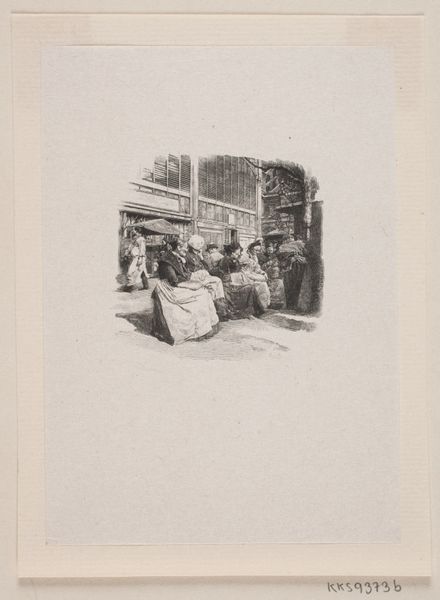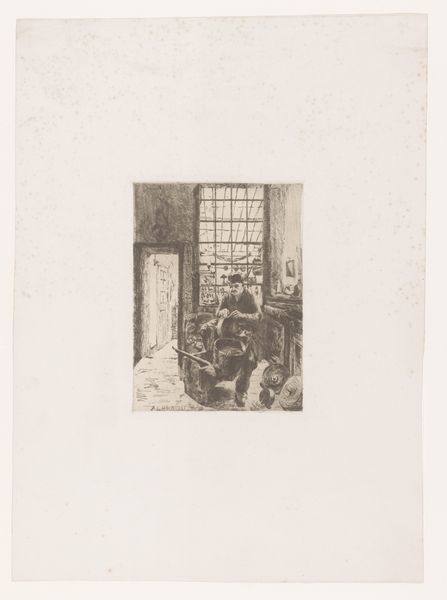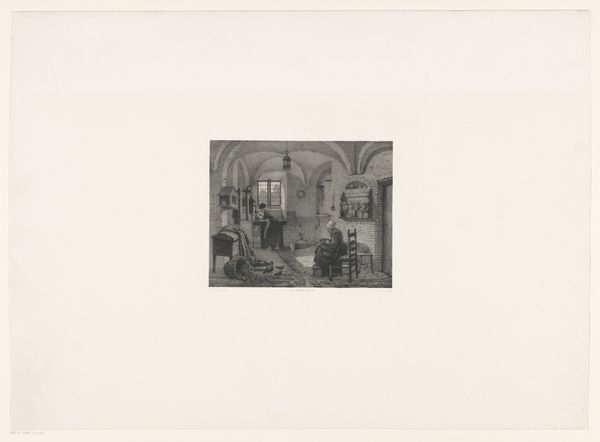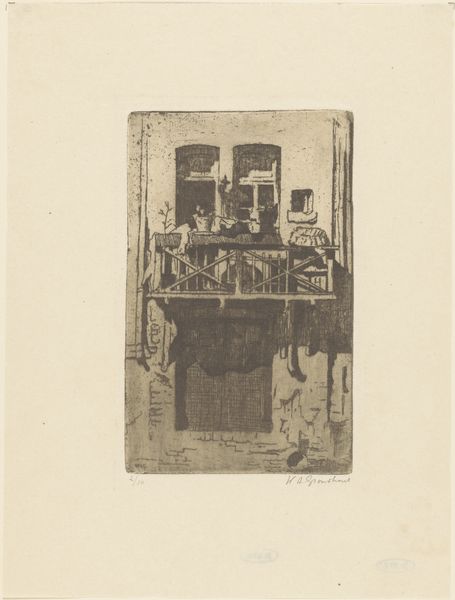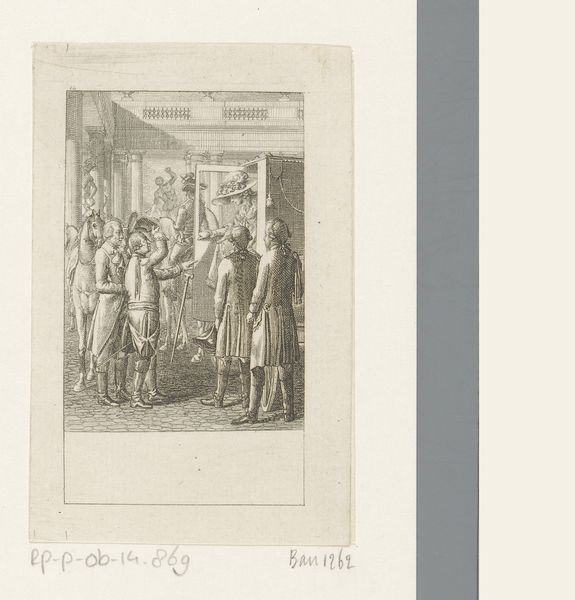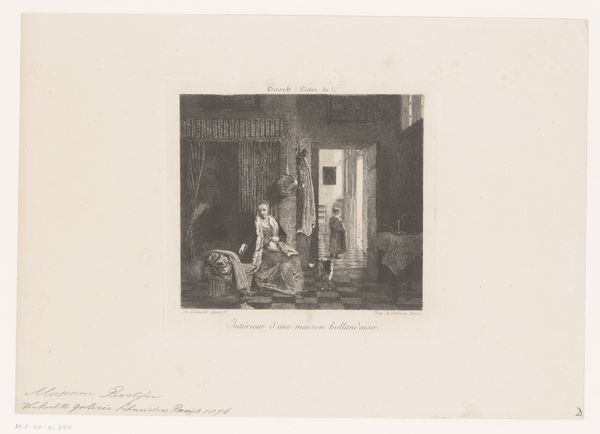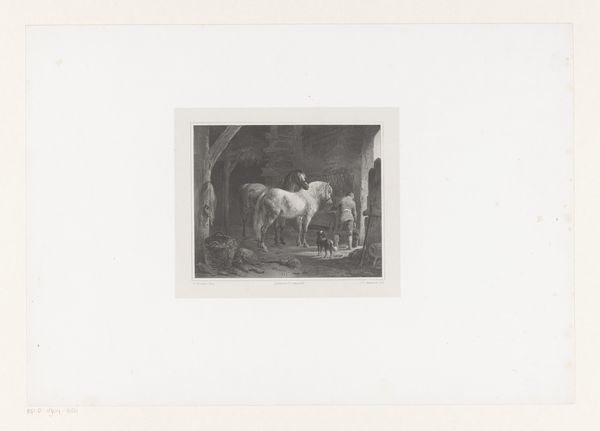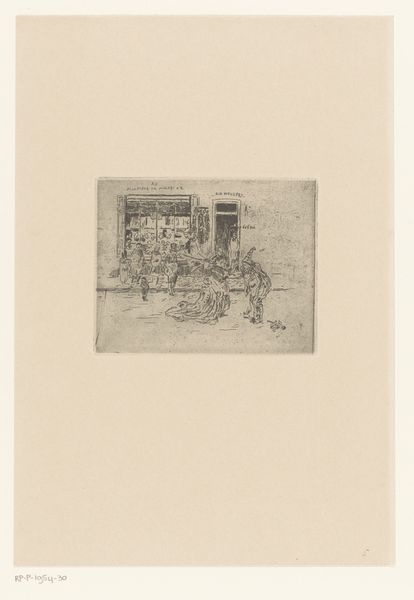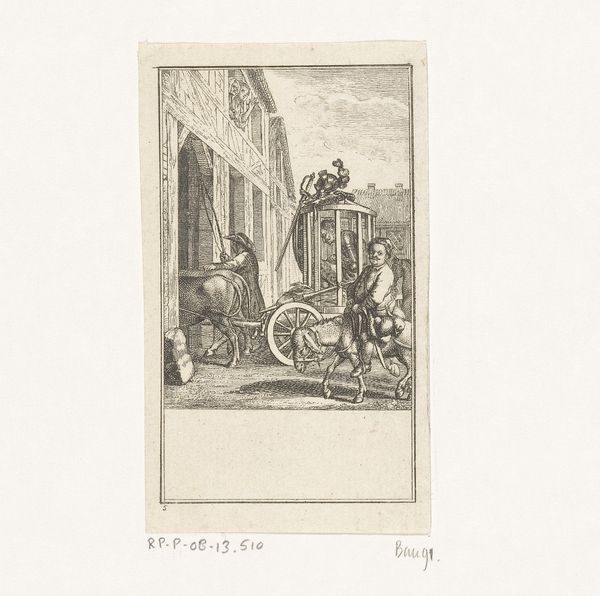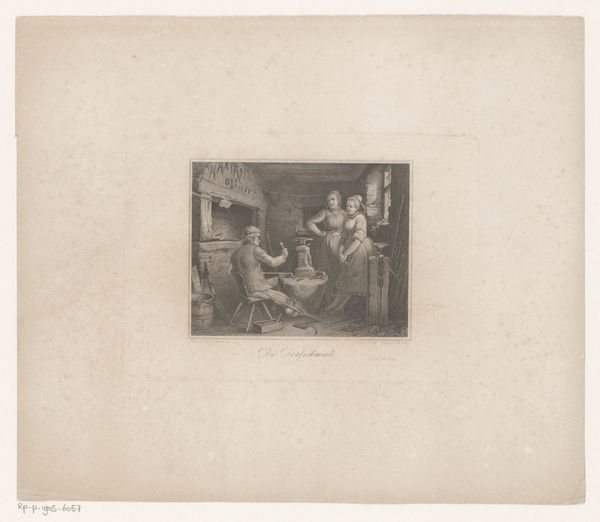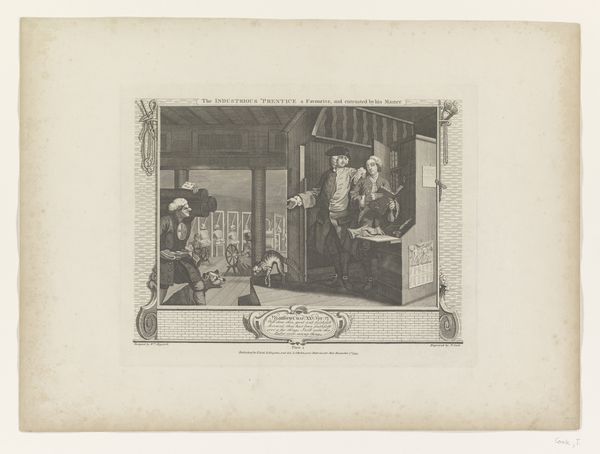
Dimensions: height 105 mm, width 63 mm
Copyright: Rijks Museum: Open Domain
Curator: Here we have Daniel Nikolaus Chodowiecki's etching and engraving from 1778, titled "Man helpt een vrouw uit een koets stappen," which translates to "Man helps a woman out of a carriage." It’s currently held at the Rijksmuseum. Editor: My first impression? It feels like a glimpse into a very ordered society. There’s almost a stage-like quality to the composition. Curator: I see what you mean about the stage-like quality. The etching technique certainly lends itself to that feeling of meticulous detail, each line contributing to a controlled narrative. Do you pick up any particular symbolic details? Editor: Well, the man assisting the woman carries a strong element of chivalry, though his somewhat aloof demeanor keeps me wondering about any societal power at play. His clothing, as well as hers, mark their higher standing within the socio-economic stratum. Is the narrative only superficial? Curator: The act itself – helping a woman from a carriage – certainly symbolizes a societal code of conduct, particularly emphasizing the role of men in assisting women in public spaces. Consider also the architectural forms—they represent the urban landscape as not only backdrop but also a visual marker of civilization and progress. These types of scenes were frequently depicted to model civil ideals, reflecting a complex interaction. Editor: Yes, there's a real emphasis on order. It's more than just visual – it presents a very particular image of city life, even suggesting civic order through social relations. It seems designed to offer its public moral lessons about their conduct and urban space. Curator: And the print medium itself democratized access to such visual lessons, moving them beyond the elite sphere of paintings and into homes of the emerging middle class. Editor: Indeed. The relative accessibility allowed for widespread dissemination of ideals and values and could impact perception. I notice in some ways it feels familiar in the social dynamics shown – in many ways those types of roles, expectations of male care, while hopefully without hierarchical intentions, remains relevant to many. Curator: Ultimately, this piece invites us to ponder not just a specific moment in the past, but also to look into societal values reflected within its elegant lines and textures. Editor: I agree, I'll leave with wanting to think about what really remains, or maybe should change, as it invites us to draw connections between historical etiquette and modern social interactions.
Comments
No comments
Be the first to comment and join the conversation on the ultimate creative platform.
